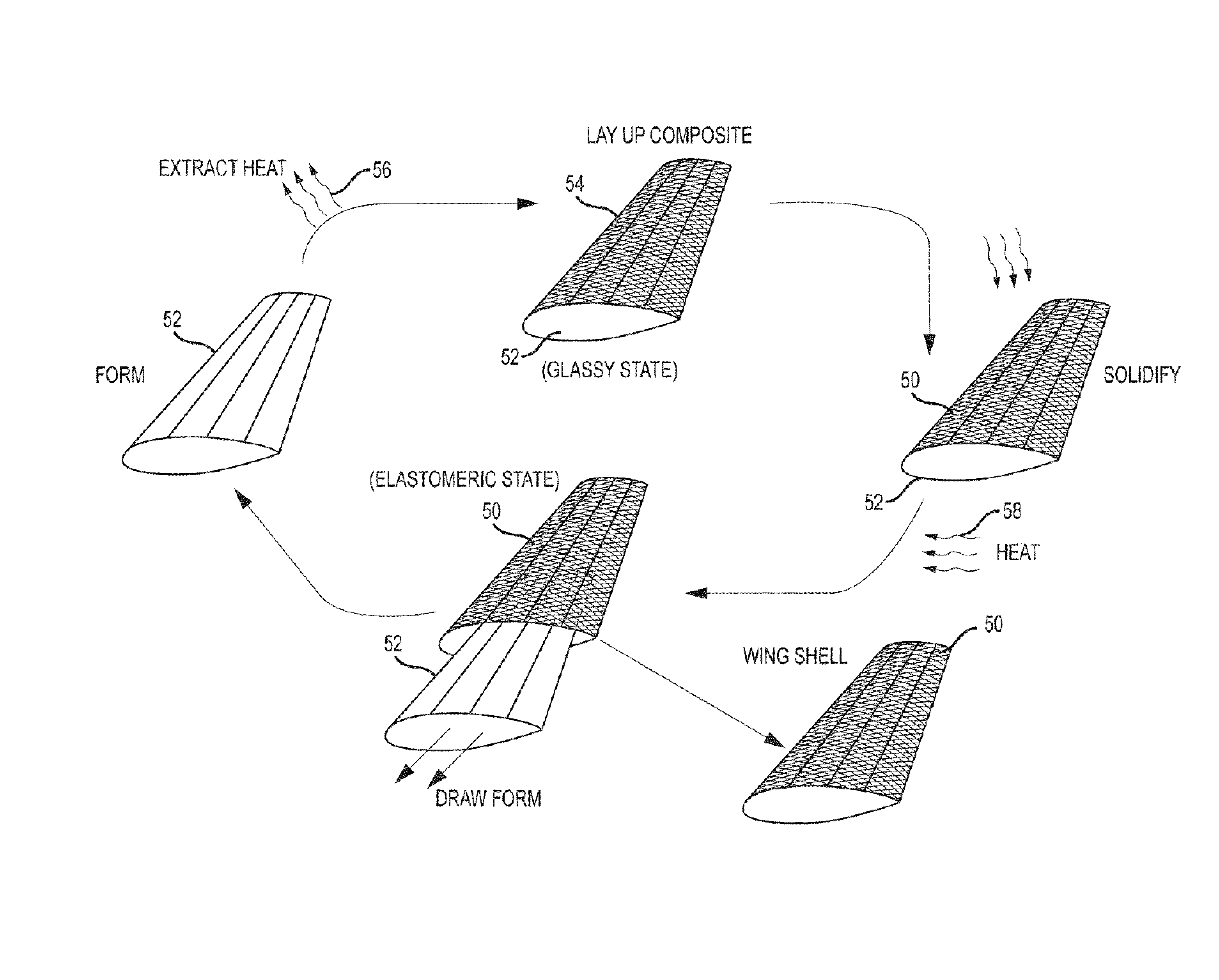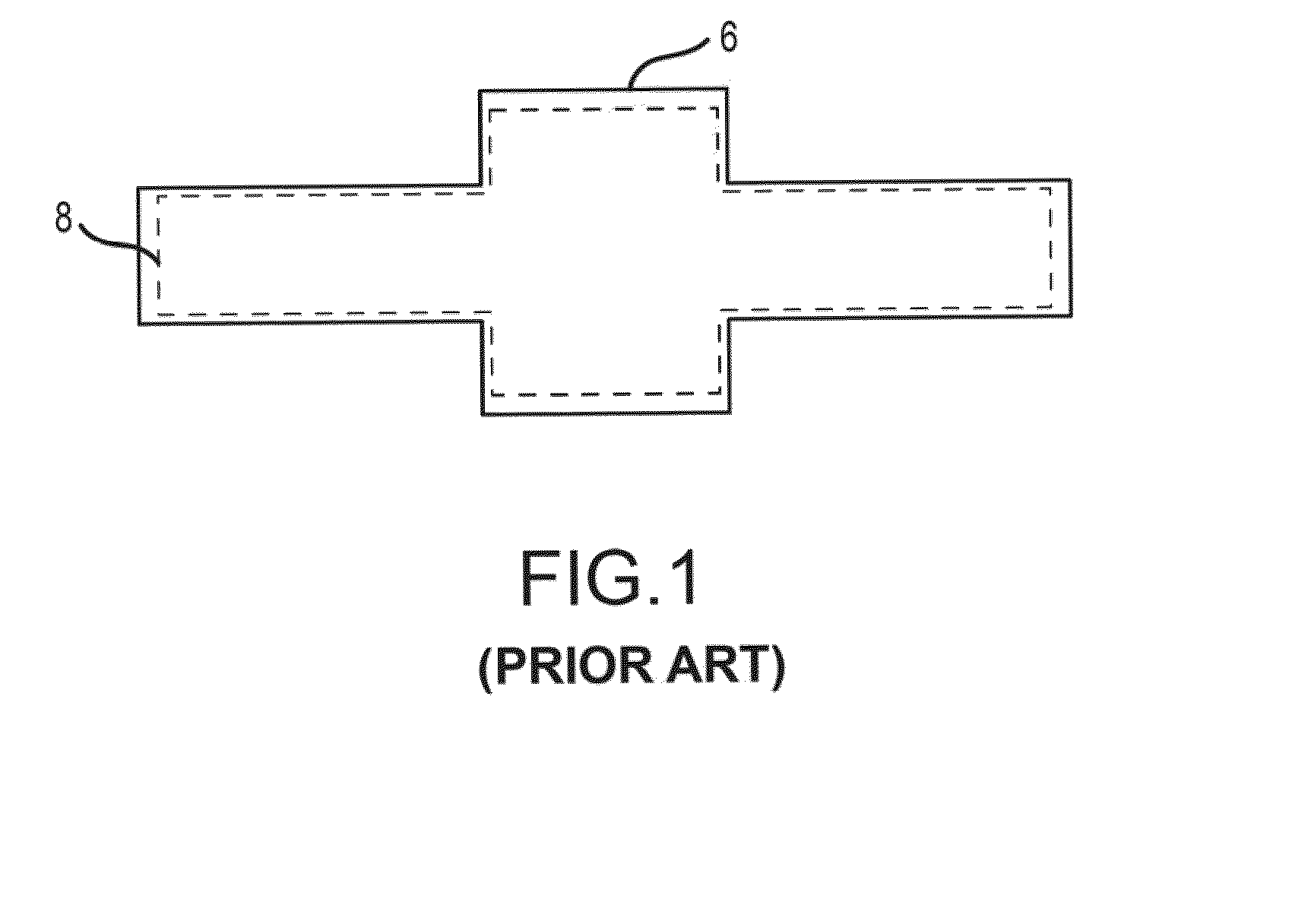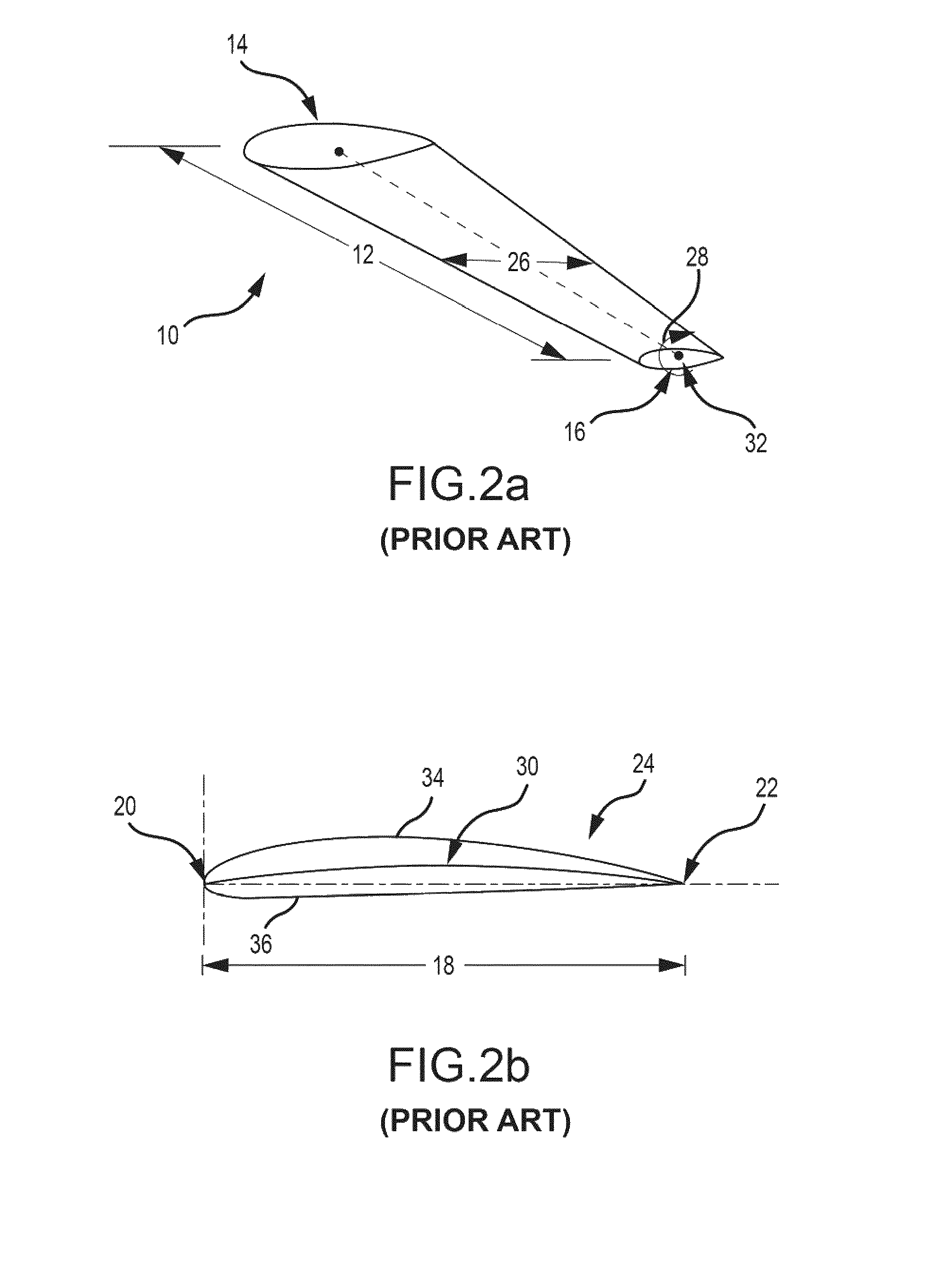Method of manufacture of one-piece composite parts with a polymer form that transitions between its glassy and elastomeric states
a polymer and one-piece technology, applied in the field of one-piece composite parts manufacturing, can solve the problems of high cost, large complexity and expense associated with manufacturing related molds, and achieve the stiffness desired for the layup of composite materials
- Summary
- Abstract
- Description
- Claims
- Application Information
AI Technical Summary
Benefits of technology
Problems solved by technology
Method used
Image
Examples
Embodiment Construction
[0025]The present invention provides a low-cost method of manufacture of one-piece composite parts having shapes that do not draw and, in particular, wings and wing shells with twist or taper and camber. A polymer form is created for a one-piece composite part. This form may be manufactured using very inexpensive manufacturing processes such as compression or injection molding. The form does not have to be shaped during the manufacture of the composite parts or re-shaped to reuse the form. This may dramatically reduce the capital investment required to manufacture composite parts.
[0026]The process of manufacture using the polymer form described herein may be applied to any one-piece composite part in which the shape of the form does not draw from the one-piece composite part formed thereon. The terms “designed to draw” and “does not draw” are well known in the industry. “Designed to draw” means that the form may be pulled (or drawn) from the composite part without breaking or deform...
PUM
| Property | Measurement | Unit |
|---|---|---|
| shape-memory properties | aaaaa | aaaaa |
| solution | aaaaa | aaaaa |
| glass transition temperature | aaaaa | aaaaa |
Abstract
Description
Claims
Application Information
 Login to View More
Login to View More - R&D
- Intellectual Property
- Life Sciences
- Materials
- Tech Scout
- Unparalleled Data Quality
- Higher Quality Content
- 60% Fewer Hallucinations
Browse by: Latest US Patents, China's latest patents, Technical Efficacy Thesaurus, Application Domain, Technology Topic, Popular Technical Reports.
© 2025 PatSnap. All rights reserved.Legal|Privacy policy|Modern Slavery Act Transparency Statement|Sitemap|About US| Contact US: help@patsnap.com



